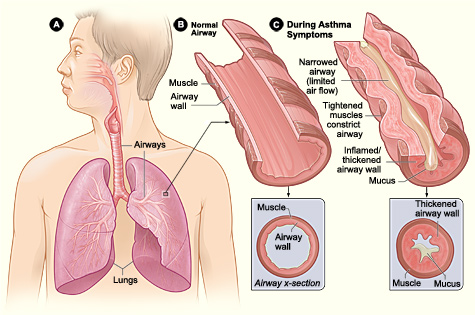6. Influenza

Influenza, commonly referred to as the flu, is an infectious disease caused by RNA viruses of the family Orthomyxoviridae (the influenza viruses), that affects birds and mammals. The most common symptoms of the disease are chills, fever, sore throat, muscle pains, severe headache, coughing, weakness/fatigue and general discomfort. Although it is often confused with other influenza-like illnesses, especially the common cold, influenza is a more severe disease than the common cold and is caused by a different type of virus. Influenza may produce nausea and vomiting, particularly in children, but these symptoms are more common in the unrelated gastroenteritis, which is sometimes called inaccurately “stomach flu.” Flu can occasionally cause either direct viral pneumonia or secondary bacterial pneumonia. Typically, influenza is transmitted through the air by coughs or sneezes, creating aerosols containing the virus. Influenza can also be transmitted by direct contact with bird droppings or nasal secretions, or through contact with contaminated surfaces. Airborne aerosols have been thought to cause most infections, although which means of transmission is most important is not absolutely clear. Influenza viruses can be inactivated by sunlight, disinfectants and detergents. As the virus can be inactivated by soap, frequent hand washing reduces the risk of infection.
5. Diabetes (Type -02)

Type 2 diabetes is a chronic (lifelong) disease marked by high levels of sugar (glucose) in the blood. Type 2 diabetes is the most common form of diabetes. Diabetes is caused by a problem in the way your body makes or uses insulin. Insulin is needed to move blood sugar (glucose) into cells, where it is stored and later used for energy. When you have type 2 diabetes, the body does not respond correctly to insulin. This is called insulin resistance. Insulin resistance means that fat, liver, and muscle cells do not respond normally to insulin. As a result blood sugar does not get into cells to be stored for energy. When sugar cannot enter cells, abnormally high levels of sugar build up in the blood. This is called hyperglycemia. High levels of blood sugar often trigger the pancreas to produce more and more insulin, but it is not enough to keep up with the body’s demand. People who are overweight are more likely to have insulin resistance, because fat interferes with the body’s ability to use insulin.
Type 2 diabetes usually occurs gradually. Most people with the disease are overweight at the time of diagnosis. However, type 2 diabetes can also develop in those who are thin, especially the elderly.
4. Asthma
Asthma (AZ-ma) is a chronic (long-term) lung disease that inflames and narrows the airways. Asthma causes recurring periods of wheezing (a whistling sound when you breathe), chest tightness, shortness of breath, and coughing. The coughing often occurs at night or early in the morning.
Asthma affects people of all ages, but it most often starts during childhood. In the United States, more than 22 million people are known to have asthma. Nearly 6 millionof these people are children.
The airways are tubes that carry air into and out of your lungs. People who have asthma have inflamed airways. This makes the airways swollen and very sensitive. They tend to react strongly to certain inhaled substances.
When the airways react, the muscles around them tighten. This narrows the airways, causing less air to flow into the lungs. The swelling also can worsen, making the airways even narrower. Cells in the airways may make more mucus than normal. Mucus is a sticky, thick liquid that can further narrow your airways.
This chain reaction can result in asthma symptoms. Symptoms can happen each time the airways are inflamed.




